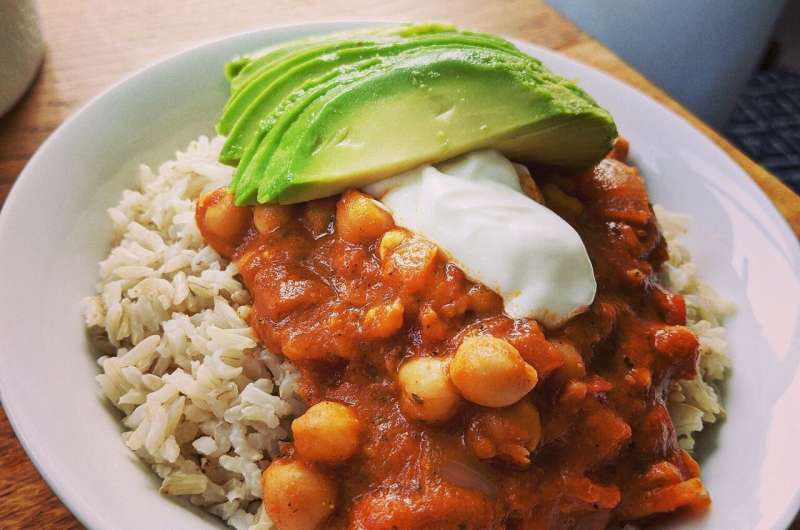
Dishes like Brazilian steak and Indian kidney bean curry have an especially large biodiversity footprint, or impact on biodiversity, according to a study published in the open-access journal PLOS ONE by Elissa Cheng from the National University of Singapore, Singapore, and colleagues.
Food choices can have significant environmental impacts. Previous research has begun to develop datasets that identify the encroachment of specific crops on the ranges of birds, mammals and amphibians. Based on these data, Cheng and colleagues estimated how 151 different popular dishes from around the world impact biodiversity.
The authors used lists of popular dishes taken from CNN.com and TasteAtlas.com, standardizing each dish to be 825 kCal.
They calculated the biodiversity footprint of each dish's ingredient by looking at the richness, conservation status, and range of wild mammals, birds, and amphibians within the agricultural land used for the specific product, and added each ingredient's footprint together to generate an overall biodiversity footprint for every dish. Footprint scores shifted depending on whether the ingredient was locally or globally sourced, and industrially or small-scale farmed.
The top 20 dishes with the largest biodiversity footprints included several Brazilian steak dishes (picanha, churrasco, fraldinha) and other meat dishes like salsa verde pork, yukgaejang (a Korean spicy beef and vegetable stew), and caldo de pollo (chicken soup)—but also vegan dishes like dal (lentil soup), rajma (a kidney bean curry), chana masala (chickpea curry) and idli (a fermented savory rice cake).
Overall, these tended to be dishes made with beef and chicken, as well as legumes and rice. For vegan and vegetarian dishes of the Indian subcontinent, rice and legumes grown industrially tended to have especially high impacts on threatened species and range biodiversity indicators.
Brazilian beef and lamb dishes also had high biodiversity impacts due to the conversion of Amazon rainforest and other diverse ecosystems to pasture. The 20 dishes with the smallest biodiversity footprints tended to be vegetarian/vegan, starchy, and grain or potato-based—French fry-style recipes like pommes frites and triple cooked chips, kartoffelpuffer (a German potato pancake), and baguettes, for instance.
The authors note they didn't differentiate between wildlife able to survive in cultivated habitats, versus wildlife with specific natural habitat requirements—and looked specifically at mammals, birds, and amphibians. They also note the dishes examined here are not necessarily representative and focus on dishes from countries with a high GDP, and that recipe variation might lead to different results.
Regardless, this study underscores the importance of specific ingredients and areas of production in terms of biodiversity impact.
The authors add, "Small changes in the dish we choose to eat and where we get the ingredients from can go a long way in preventing species extinctions. In addition to the large footprint of beef and lamb dishes from countries containing biodiversity hotspots, vegetarian dishes from highly biodiverse and under strong human pressure countries like India, can be also very detrimental for biodiversity."
More information: Biodiversity footprints of 151 popular dishes from around the world, PLoS ONE (2024). DOI: 10.1371/journal.pone.0296492
Provided by Public Library of Science
Citation: Meat, legume or rice-based dishes tend to have a larger biodiversity footprint, study shows (2024, February 21) retrieved 21 February 2024 from https://ift.tt/2OmjfGU
This document is subject to copyright. Apart from any fair dealing for the purpose of private study or research, no part may be reproduced without the written permission. The content is provided for information purposes only.
"food recipes" - Google News
February 22, 2024 at 02:00AM
https://ift.tt/iHQ2RDw
Meat, legume or rice-based dishes tend to have a larger biodiversity footprint, study shows - Phys.org
"food recipes" - Google News
https://ift.tt/d5fu8yx
https://ift.tt/utVXHhY
Bagikan Berita Ini















0 Response to "Meat, legume or rice-based dishes tend to have a larger biodiversity footprint, study shows - Phys.org"
Post a Comment